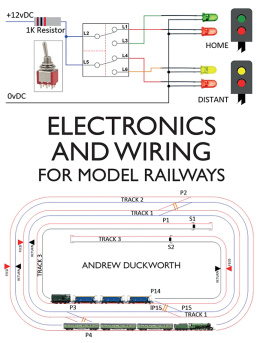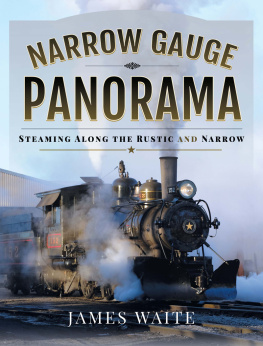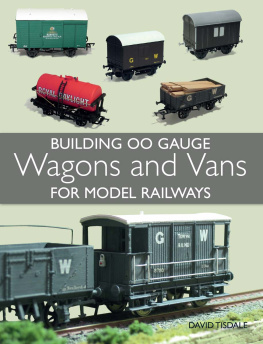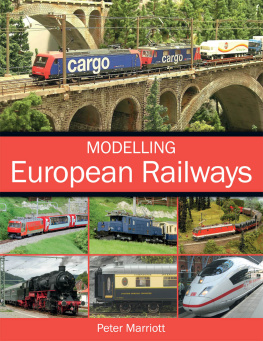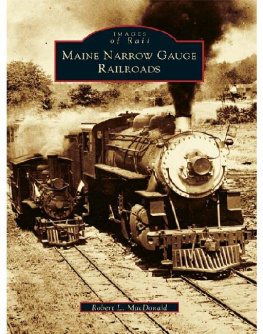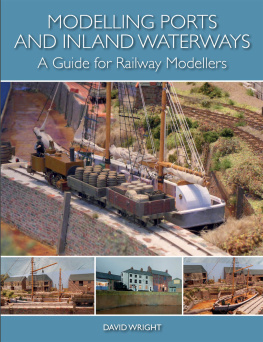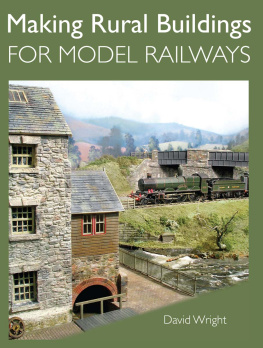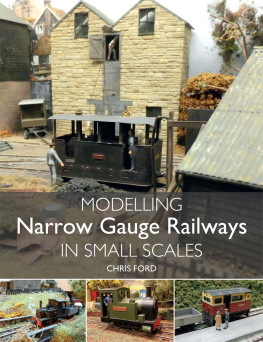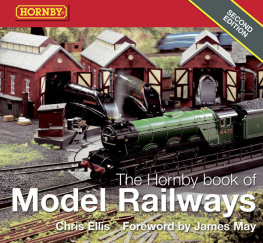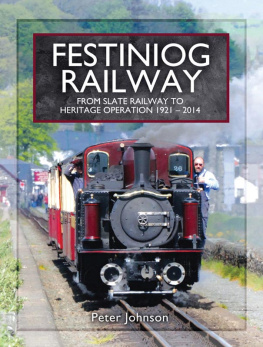Page List
MODELLING
The Welsh Narrow
Gauge Railways
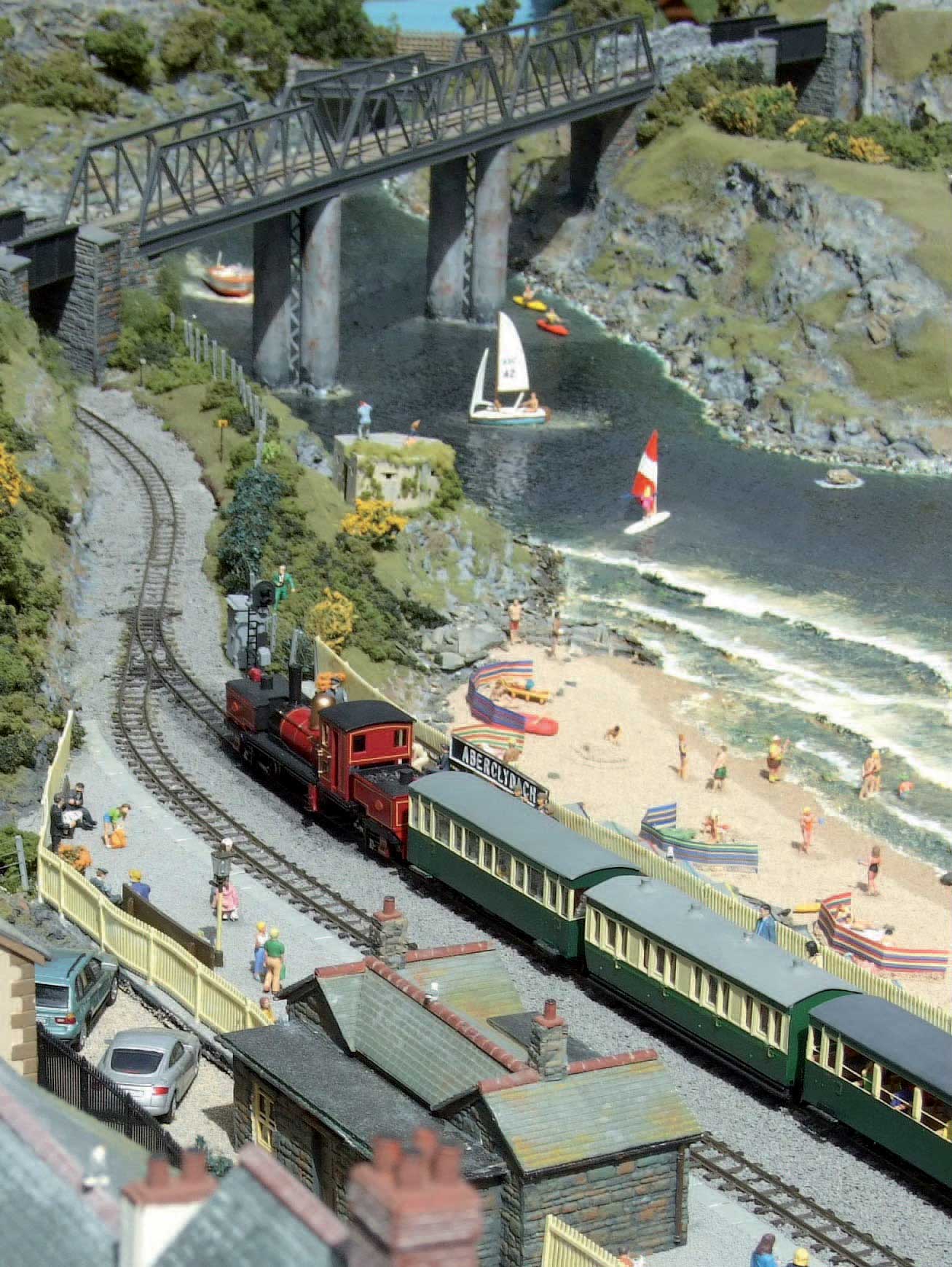

First published in 2021 by
The Crowood Press Ltd
Ramsbury, Marlborough
Wiltshire SN8 2HR
www.crowood.com
This e-book first published in 2021
Chris Ford 2021
All rights reserved. This e-book is copyright material and must not be copied, reproduced, transferred, distributed, leased, licensed or publicly performed or used in any way except as specifically permitted in writing by the publishers, as allowed under the terms and conditions under which it was purchased or as strictly permitted by applicable copyright law. Any unauthorised distribution or use of this text may be a direct infringement of the authors and publishers rights, and those responsible may be liable in law accordingly.
British Library Cataloguing-in-Publication Data
A catalogue record for this book is available from the British Library.
ISBN 978 1 78500 801 6
Dedication
For Archie
Acknowledgements
The author wishes to thank the following: Martin Collins, Nigel Hill, Simon Hargraves, Steve Mann, Matthew Kean and Richard Holder.
Also the Bala Lake Railway, The Vale of Rheidol Railway, the Ffestiniog and Welsh Highland Railway and the Talyllyn Railway.
CHAPTER ONE
INTRODUCTION
Welcome to Modelling the Welsh Narrow Gauge Railways. You may well have picked this book up after visiting one of the preserved Welsh narrow gauge lines. You may be an existing modeller who fancies something a little different, or you may already be a modeller of narrow gauge railways who has bought this book to add to your collection. Modelling the Welsh Narrow Gauge Railways contains a graduated set of numbered projects, starting with a simple plastic wagon kit through to a series of thoughts and suggestions on how you may wish to build a complete (but quite compact) layout.
There are some historical background notes on each individual item along the way, followed by a set of instructions on how you may wish to build it. These are by no means hard-and-fast rules, and in most cases it would be possible to deviate from the instructions by at least a small amount and to use other techniques that you may be more comfortable with. Those that are included here are very much personal techniques which have been built up over a number of years and are presented only as suggestions. You may well find different ways that suit you better. Allied to this there are Tip boxes scattered throughout the text of each section, adding an idea or two to the fundamental build structure.
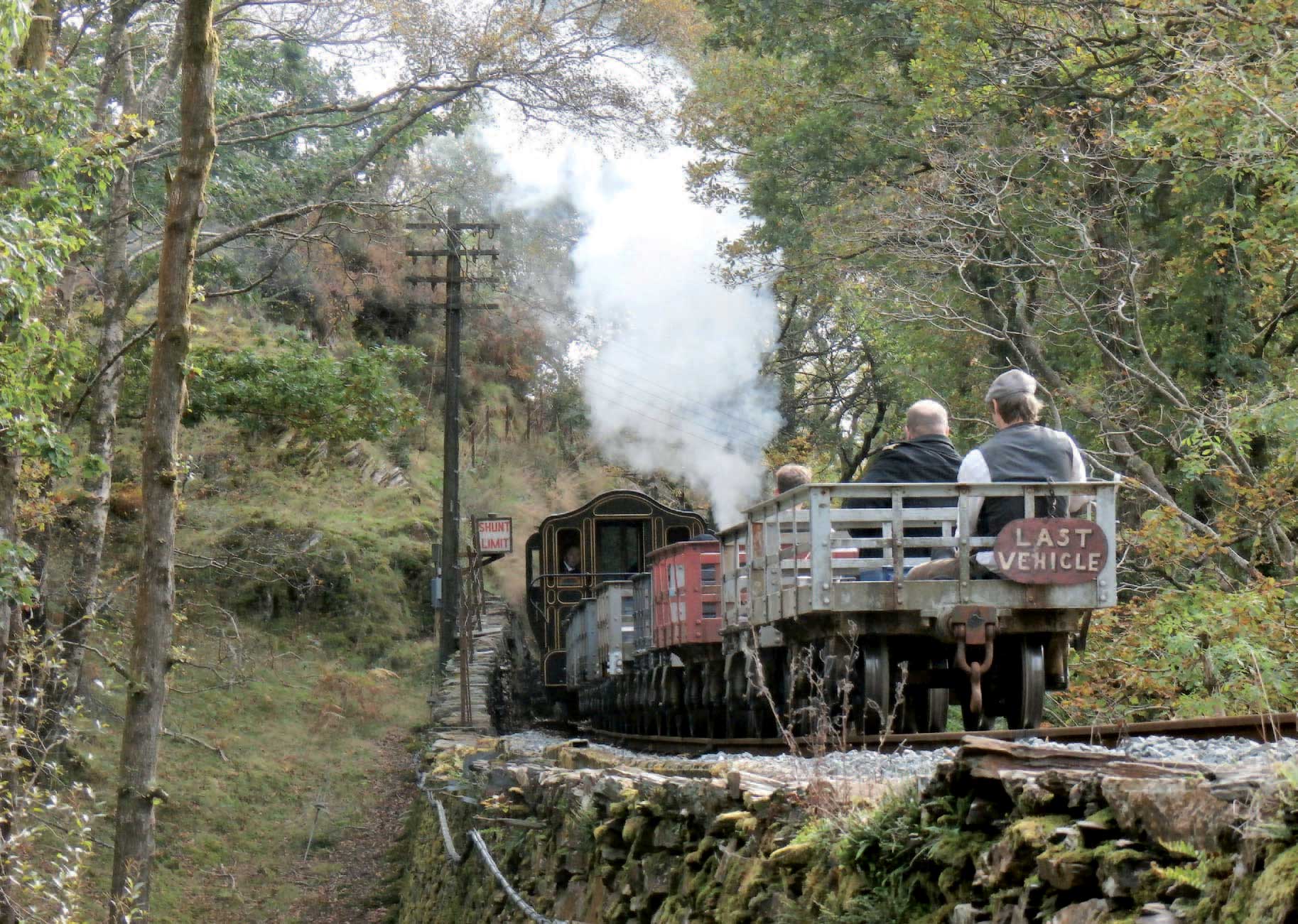
Probably most peoples mental image of the Welsh narrow gauge: slate wagons, small trains and beautiful scenery.
The overall aim of this book is to inspire those who are just beginning, those who are stalled in their modelling, or these looking for something different. Its often recognized that one of the hardest things in modelling is to decide what to do and then actually to begin. Coupled with this is the fear of messing up during the building process. Hopefully this volume will help to nudge you into breaking through that barrier and making a start.
WHY CHOOSE THE WELSH NARROW GAUGE RAILWAY?
Why narrow gauge and why Wales? Fairly high on the list of reasons for building any model railway layout will come the lines surroundings and atmosphere and the way that this attracts the modeller at a personal and somewhat emotional level. The scenery and landscape around the Welsh narrow gauge lines is generally accepted to be some of the most beautiful and spectacular in the British Isles. Add to that the cute element of the comparatively tiny locomotives with compact rolling stock and this makes the area and its lines highly attractive to everyone not just the ardent rail enthusiast.
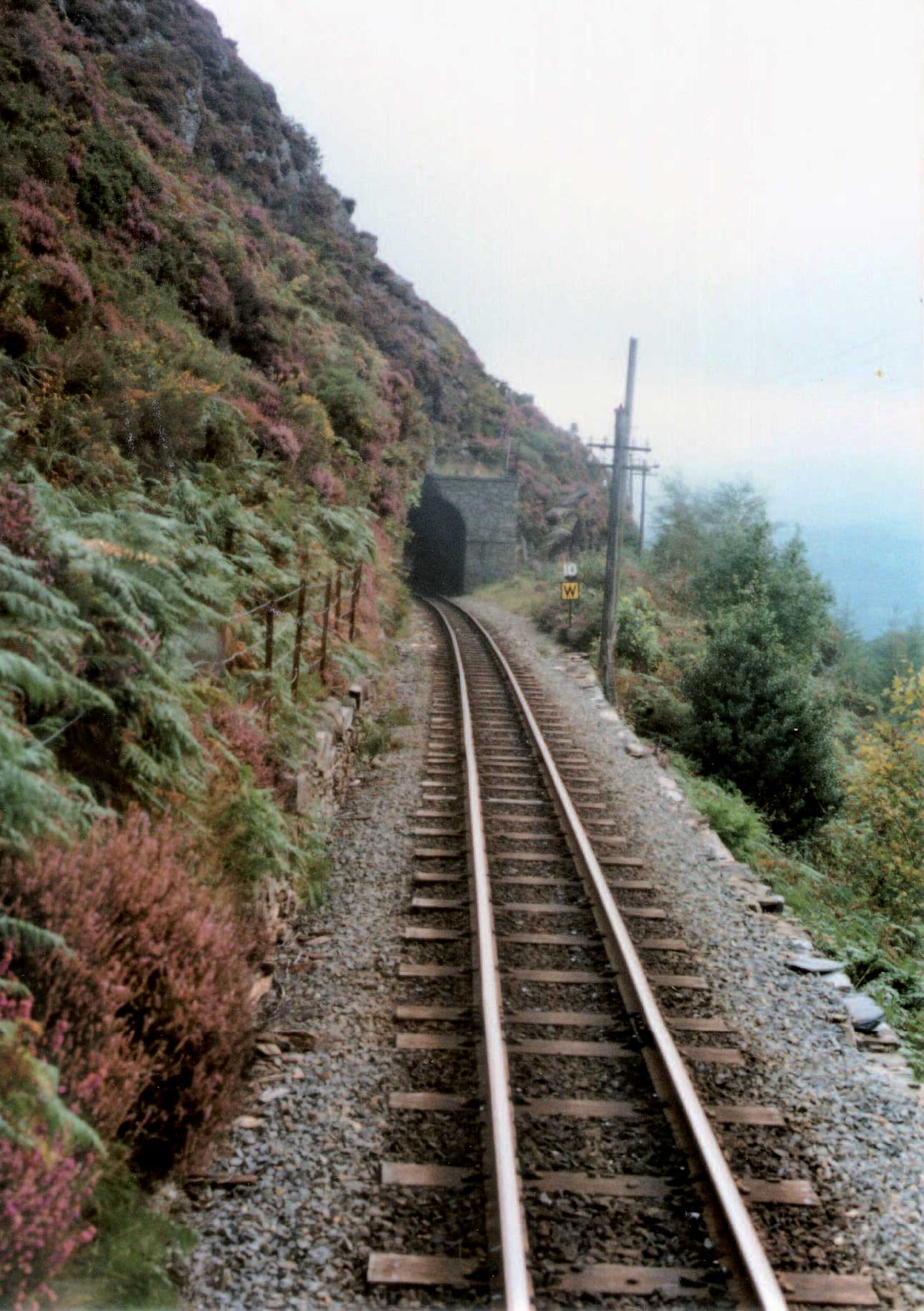
The big advantage of narrow gauge is the ability to run in challenging geological surroundings.
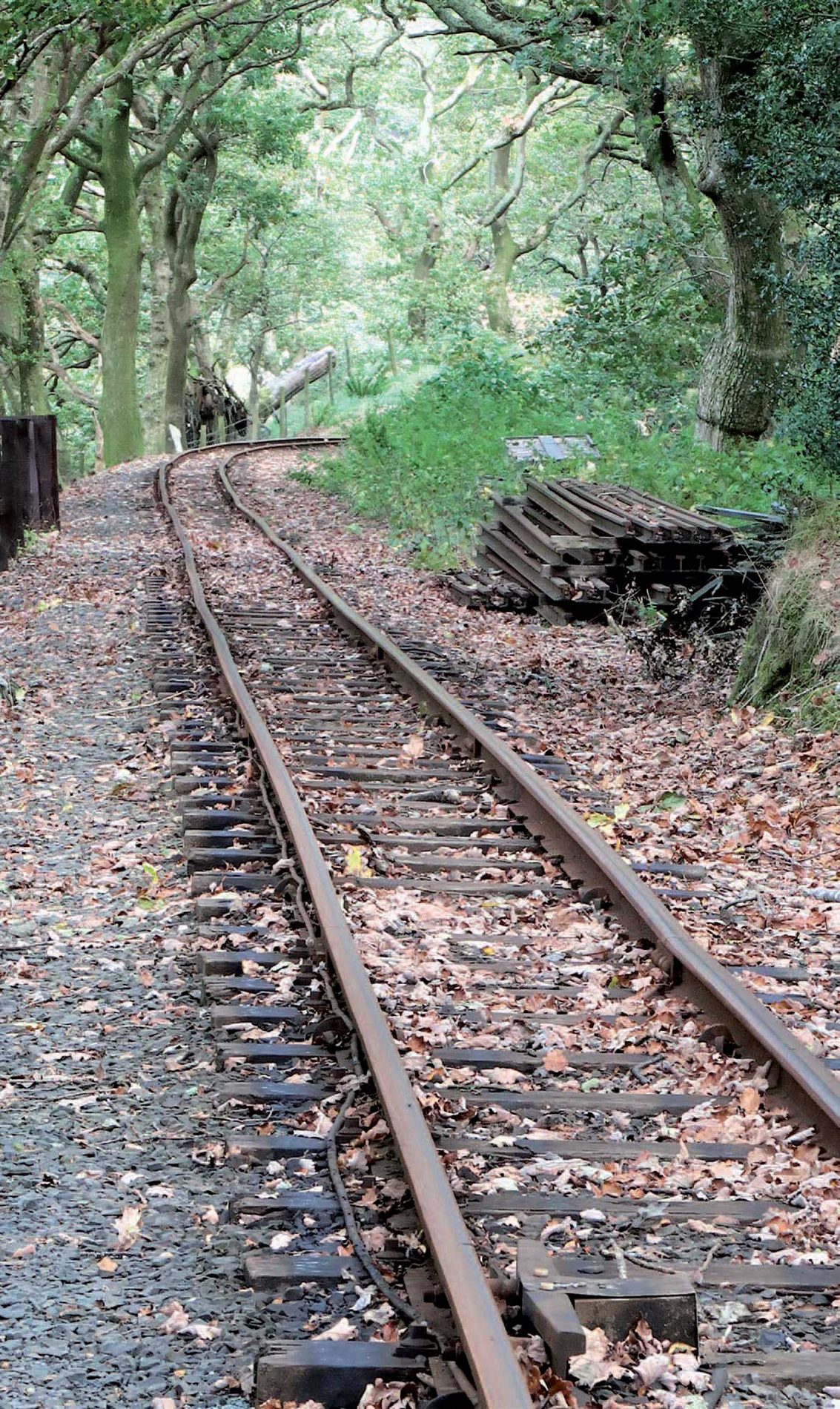
The attractive nature of Welsh narrow gauge demonstrated by this view on the Tal-y-llyn Railway.
There is of course a little kidology at work here: most people stumble across the Welsh narrow gauge lines as part of the modern tourist trail of the area when they are already in relaxed holiday mood and this pretty and cute element can easily mask the often harsh climate and arduous industry that make up the history of the area and its railways. It may look pretty at first glance, but there was and to a certain extent still is a gritty postindustrial undercurrent. The lush green mountains may not resemble black satanic mills, but this is a hard-working environment, still inhabited by the sons and daughters of the men and families that worked the hill farms, the unforgiving slate quarries and the railways and shipping that took the grey rock of Wales to all points of the globe. Yes, the little railways are very attractive, but the only reason that they, and many of the old families, are there is because of a heavy industrial base that is all but gone. Where once the railways mainly carried the valuable slivers of cleanly split rock, they now carry children, parents, dogs, buggies and the detritus of the British holiday trade.
A SMALLER DOMESTIC REQUIREMENT
Despite the visually vast surrounding scenery of the Welsh narrow gauge railway, it will soon become apparent that it is possible in model and domestic terms to be able to think somewhat smaller. For the railway modeller, domestic space is always the elephant in the room no matter how big the layout in your minds eye, there is always the lack of domestic space to bring your dreams down to earth with a bump. However, Wales, with its rolling hills, its mountains and its deep quarries and mines, is a railway landscape that will surprisingly fit this space in a much more forgiving way. It does this successfully in model form simply because it does it so well in real life. These are railways that fit into their environment, rather than cutting straight across it, bending and weaving among the green hillsides and through small holes in the rock, challenging nature to stop them. The modeller of the main-line standard gauge railway is always limited in terms of space; possibly to a single station arrangement. The Welsh narrow gauge gives an overwhelming advantage you can often take the same sort of household space and with a little careful planning and selective compression, model the whole line. So where do you start?
WHAT SCALE AND GAUGE?
This book is designed to take a notional novice or armchair modeller from an almost zero baseline to a point where a Welsh narrow gauge layout is completed. It also aims to offer the more experienced modeller a few different ways of looking at what he or she already does. The text and projects all feature the most popular 4mm scale (OO9) the same scale as the models mass-produced by Hornby, Bachmann and so on. This means that any of the included projects could be run or placed alongside these OO gauge items if you so wish. This is not to say that the techniques included here and some of the materials could not be used for other modelling scales such as 7mm scale (Gauge O), or one of the slightly more specialist in-between scales such as 5.5mm scale or S scale. In fact, S scale would be a highly recommended upward jump, giving you something which would be very different. In crude terms with S, you would just need to increase any of the building sizes from a scale of 4mm to 1ft to 4.74mm to 1ft. However, the rolling stock would be another matter and would require some very canny thinking and scratch-building (making items from mostly raw materials such as plastic sheet or metal), but it would not be impossible and would create a very individual model railway.



